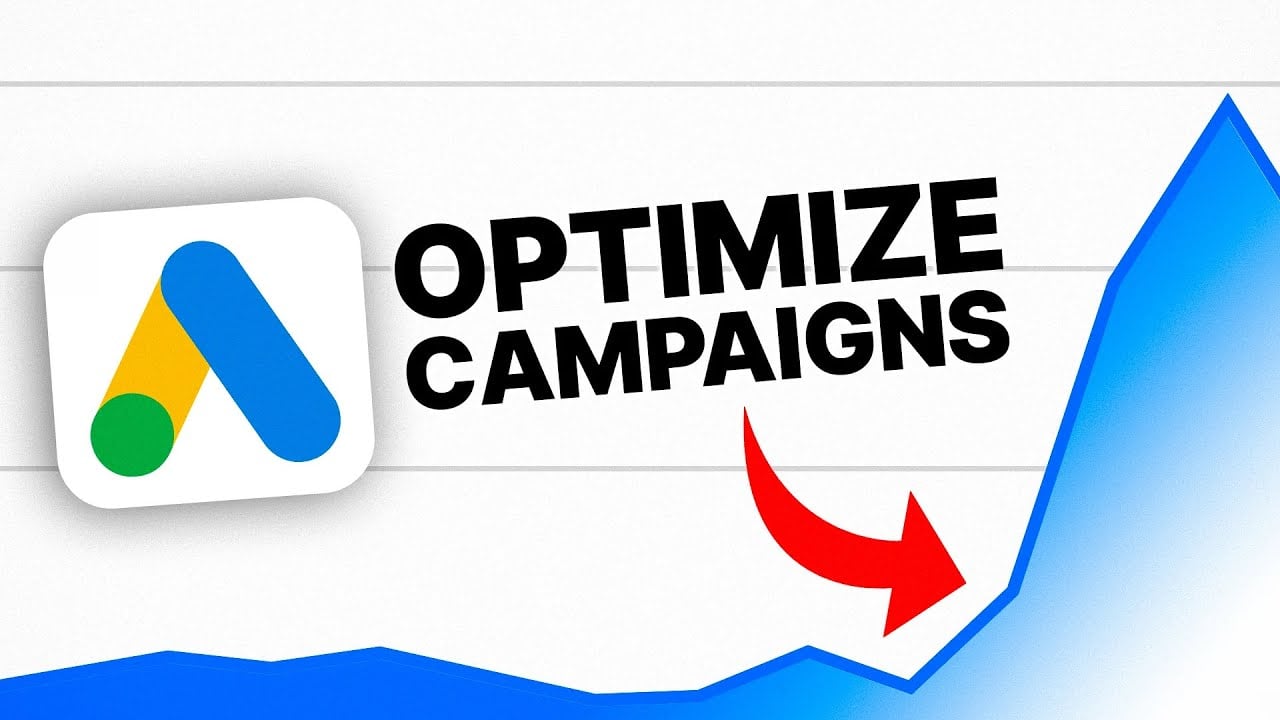Have you ever wondered how advertisers manage to target specific products or services without going through the hassle of keyword mapping? Well, get ready to be amazed by the power of Dynamic Search Ads (DSA) in GoogleAds!
This ingenious feature allows advertisers to effortlessly reach new markets by generating relevant headlines and landing pages directly from website content. It’s like having a virtual assistant that does all the hard work for you.
But just like any powerful tool, there are challenges to overcome. The lack of control over matched queries and headline messaging can be daunting, but fear not!
With proper monitoring and campaign optimization, these hurdles can be easily conquered. So, if you’re ready to supercharge your advertising game, let’s dive into the fascinating world of DSA in GoogleAds.
Table of Contents
- dsa in google ads
- 1. Introduction To DSA in Google Ads
- 2. Leveraging Website Content For Relevant Headlines And Landing Pages
- 3. Time-Saving Benefits of DSA
- 4. Expanding Reach With DSA
- 5. Targeting Options And Customization With DSA
- 6. Uncovering Untapped Opportunities With DSA
- 7. Considerations For Optimal DSA Performance
- 8. Strategies For Structuring And Optimizing DSA Campaigns
dsa in googleads
Dynamic Search Ads (DSA) in Google Ads is a feature that allows advertisers to target customers searching for specific products or services. It utilizes website content to generate relevant headlines and landing pages, saving time by eliminating the need to map keywords, bids, and ad text to each product.
DSA can help advertisers reach new markets quickly and capture additional traffic and sales opportunities not targeted by keywords. It works best with well-optimized pages and may not be compatible with Flash content or user sign-in requirements.
Regularly checking search terms reports and using negative keywords can optimize DSA campaigns. Compliance with Google’s editorial policies and review of applicable laws is crucial.
DSAs do not use keywords and instead rely on the advertiser’s website or product feed to match users’ queries, closing the gap in keyword coverage and product inventory. Challenges include lack of full control over matched queries and headline messaging, but monitoring search term reports and optimizing campaigns can address these issues.
To set up and optimize DSA campaigns, structuring campaigns properly, creating specific ad groups for different products, and using Smart Bidding strategies can improve performance and cost-effectiveness. Evaluating performance after two weeks based on Google’s suggestions and setting goals accordingly is essential for success.
Proper management is necessary for optimal DSA performance.Key Points:
- DSA targets customers searching for specific products or services using website content to generate relevant headlines and landing pages
- DSA helps capture additional traffic and sales opportunities not targeted by keywords
- DSA campaigns can be optimized through regularly checking search terms reports and using negative keywords
- DSAs do not use keywords and instead rely on the advertiser’s website or product feed to match users’ queries
- Setting up and optimizing DSA campaigns includes structuring campaigns properly, creating specific ad groups, and using Smart Bidding strategies
- Proper management is necessary for optimal DSA performance
Sources
https://support.google.com/google-ads/answer/2471185?hl=en
https://instapage.com/blog/dynamic-search-ads
https://support.google.com/searchads/answer/6154725?hl=en
https://growthmindedmarketing.com/blog/dynamic-search-ads/
Check this out:
💡 Pro Tips:
1. Utilize negative keywords: Regularly check search term reports and add negative keywords to your DSA campaign. This will help optimize your campaign and reduce irrelevant clicks.
2. Optimize landing pages: Make sure your website’s landing pages are well-optimized for DSA. Ensure they have relevant and high-quality content that matches users’ queries.
3. Review performance after two weeks: Set goals based on Google’s suggestions and evaluate your DSA campaign’s performance after two weeks. This will help you make informed decisions and adjust your campaign as needed.
4. Structure ad groups properly: Create specific ad groups for different products or product lines in your DSA campaign. This will make it easier to manage and optimize your campaign effectively.
5. Consider using Smart Bidding strategies: Explore Smart Bidding strategies to improve the performance and cost-effectiveness of your DSA campaign. These automated bidding strategies can help you maximize your ROI.
1. Introduction To DSA in Google Ads
Dynamic Search Ads (DSA) in Google Ads offer a unique and effective way for advertisers to target potential customers searching for specific products or services.
Unlike traditional keyword-based targeting, DSA utilizes website content to generate relevant headlines and landing pages for ads. This innovative approach allows advertisers to reach a wider audience and capture additional traffic and sales opportunities.
2. Leveraging Website Content For Relevant Headlines And Landing Pages
One of the key features of DSA is its ability to automatically generate headlines and landing pages based on the content of the advertiser’s website.
This saves advertisers valuable time as they no longer need to manually map keywords, bids, and ad text for each product or service. By analyzing the website content, DSA creates highly relevant and personalized ads that resonate with users and increase the chances of conversion.
Data refreshed to reflect current ad-spend trends.
3. Time-Saving Benefits of DSA
DSA offers significant time-saving benefits for advertisers.
It eliminates the need to manually create and update keyword lists, saving countless hours of work. Additionally, DSA can dynamically insert the search query into the ad headline, increasing relevancy and improving click-through rates.
This automation allows advertisers to focus their time and resources on other aspects of their advertising strategy, such as campaign optimization and creative development.
4. Expanding Reach With DSA
DSA is particularly effective in helping advertisers expand their reach and target new markets quickly.
By showing ads based on their entire website or specific categories and pages, advertisers can tap into previously untapped audiences who may be interested in their products or services. Additionally, DSA allows advertisers to exclude out-of-stock products, ensuring that they only show ads for available inventory.
This flexibility in targeting options ensures that advertisers can reach the right audience at the right time.
5. Targeting Options And Customization With DSA
DSA provides a range of targeting options and customization features for advertisers.
They can choose to show ads based on their entire website or specific categories and pages, giving them control over where their ads appear. Advertisers can also leverage negative keywords to further refine their targeting and ensure that their ads do not show for irrelevant searches.
Additionally, DSA can show on keywords flagged as having “Low Search Volume,” allowing advertisers to capture traffic that would have otherwise been missed.
6. Uncovering Untapped Opportunities With DSA
DSA can be a game-changer for advertisers looking to uncover untapped opportunities.
By not relying on keywords, DSA can close the gap in keyword coverage and product inventory. This means that advertisers can still show relevant ads for queries that may not have matched their keyword lists.
Furthermore, DSA captures additional traffic and sales opportunities that are not specifically targeted by keywords, giving advertisers a chance to reach potential customers they may have overlooked.
7. Considerations For Optimal DSA Performance
While DSA offers many benefits, there are some considerations for optimal performance.
It works best with well-optimized pages, so ensuring that your website is user-friendly and SEO-optimized will enhance the effectiveness of DSA. Flash content and user sign-in requirements may not work well with DSA, so it’s important to consider these factors when utilizing this feature.
Regularly checking search terms reports and using negative keywords can also help optimize DSA campaigns by refining targeting and improving relevancy.
8. Strategies For Structuring And Optimizing DSA Campaigns
Setting up and optimizing DSA campaigns involves proper campaign structure and evaluation of current text campaigns.
Creating a solid campaign structure includes segmenting ad groups for different products or product lines. This enables advertisers to have more control over their targeting and bidding strategies.
Additionally, leveraging Smart Bidding strategies such as Target CPA or Maximize Conversions can improve performance and cost-effectiveness.
To maximize the effectiveness of DSA, it’s recommended to set goals based on Google’s suggestions and evaluate performance after two weeks. This allows advertisers to analyze the impact of DSA on their overall advertising strategy and make necessary adjustments.
Proper management and monitoring of search term reports are vital to ensure optimal DSA performance and address any challenges that may arise, such as lack of control over matched queries and headline messaging.
In conclusion, DSA in Google Ads is a powerful tool for advertisers seeking to target customers searching for specific products or services. It leverages website content to generate relevant headlines and landing pages, saving time and effort in keyword mapping.
DSA can help advertisers reach new markets, capture additional traffic and sales opportunities, and close the gap in keyword coverage. With proper monitoring, optimization, and campaign structuring, advertisers can unlock the full potential of DSA and achieve exceptional results in their advertising campaigns.
Self-Serve DSP Platform • Buy Traffic • Performance Marketing Tips • Programmatic Advertising • Advertising Platform for Marketers












